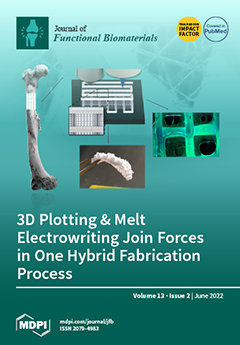The development of antimicrobial devices and surfaces requires the setup of suitable materials, able to store and release active principles. In this context, zeolites, which are microporous aluminosilicate minerals, hold great promise, since they are able to serve as a reservoir for metal-ions
[...] Read more.
The development of antimicrobial devices and surfaces requires the setup of suitable materials, able to store and release active principles. In this context, zeolites, which are microporous aluminosilicate minerals, hold great promise, since they are able to serve as a reservoir for metal-ions with antimicrobial properties. Here, we report on the preparation of Linde Type A zeolites, partially exchanged with combinations of metal-ions (Ag
+, Cu
2+, Zn
2+) at different loadings (0.1–11.9 wt.%). We combine X-ray fluorescence, scanning electron microscopy, energy-dispersive X-ray spectroscopy, and X-ray diffraction to monitor the metal-ion contents, distribution, and conservation of the zeolite structure after exchange. Then, we evaluate their antimicrobial activity, using agar dilution and optical-density monitoring of
Escherichia coli cultures. The results indicate that silver-loaded materials are at least 70-fold more active than the copper-, zinc-, and non-exchanged ones. Moreover, zeolites loaded with lower Ag
+ concentrations remain active down to 0.1 wt.%, and their activities are directly proportional to the total Ag content. Sequential exchanges with two metal ions (Ag
+ and either Cu
2+, Zn
2+) display synergetic or antagonist effects, depending on the quantity of the second metal. Altogether, this work shows that, by combining analytical and quantitative methods, it is possible to fine-tune the composition of bi-metal-exchanged zeolites, in order to maximise their antimicrobial potential, opening new ways for the development of next-generation composite zeolite-containing antimicrobial materials, with potential applications for the design of dental or bone implants, as well as biomedical devices and pharmaceutical products.
Full article






